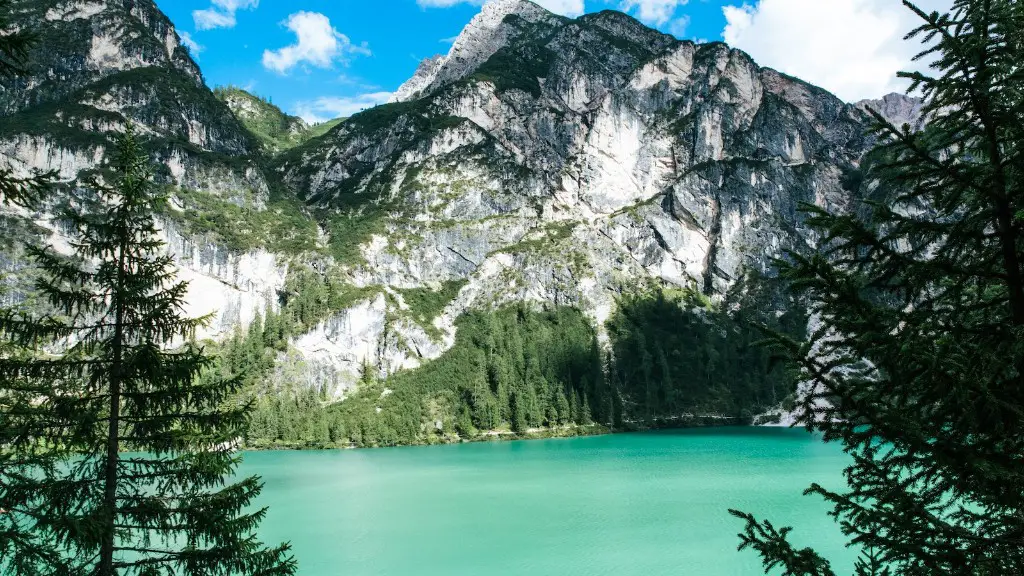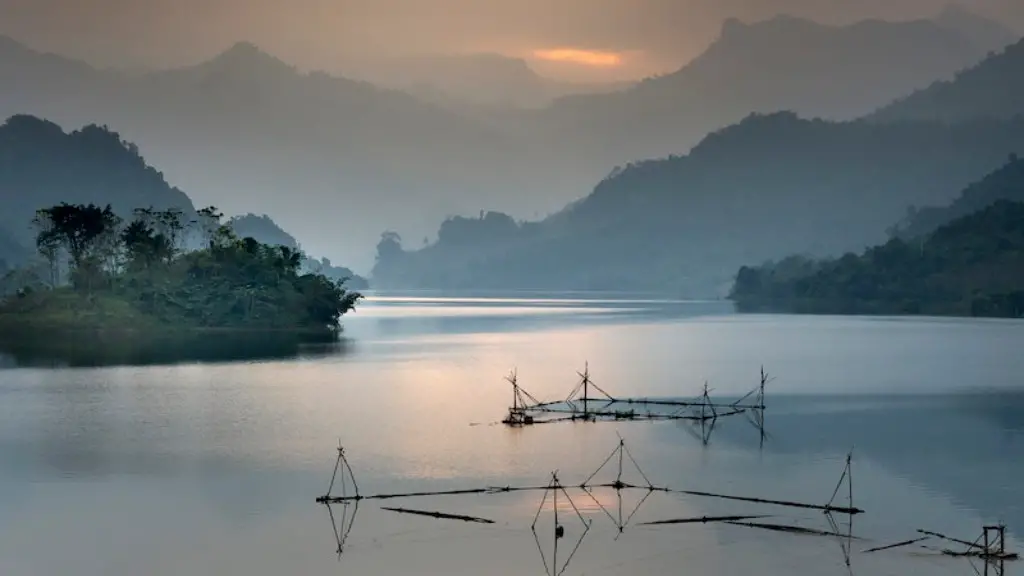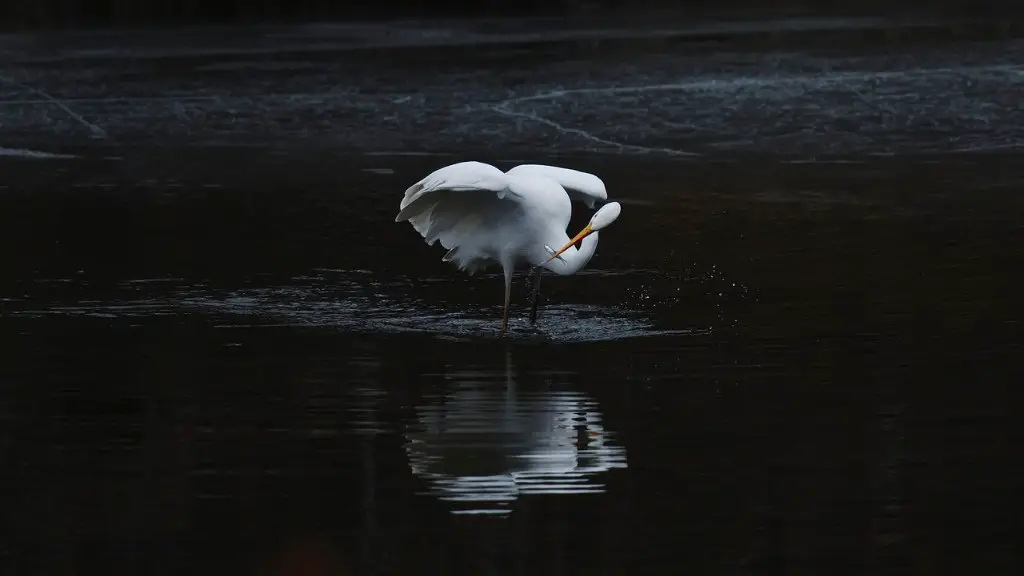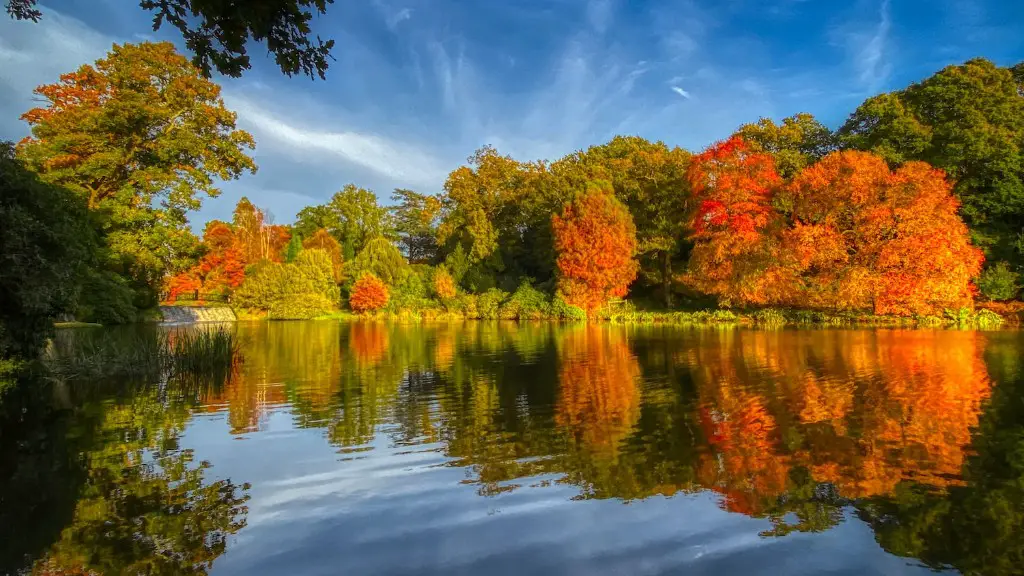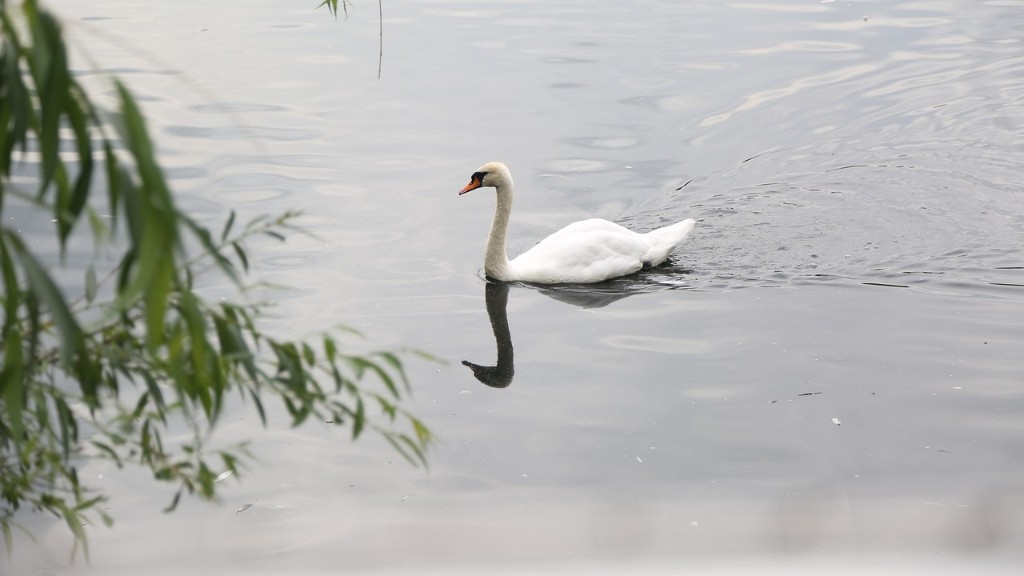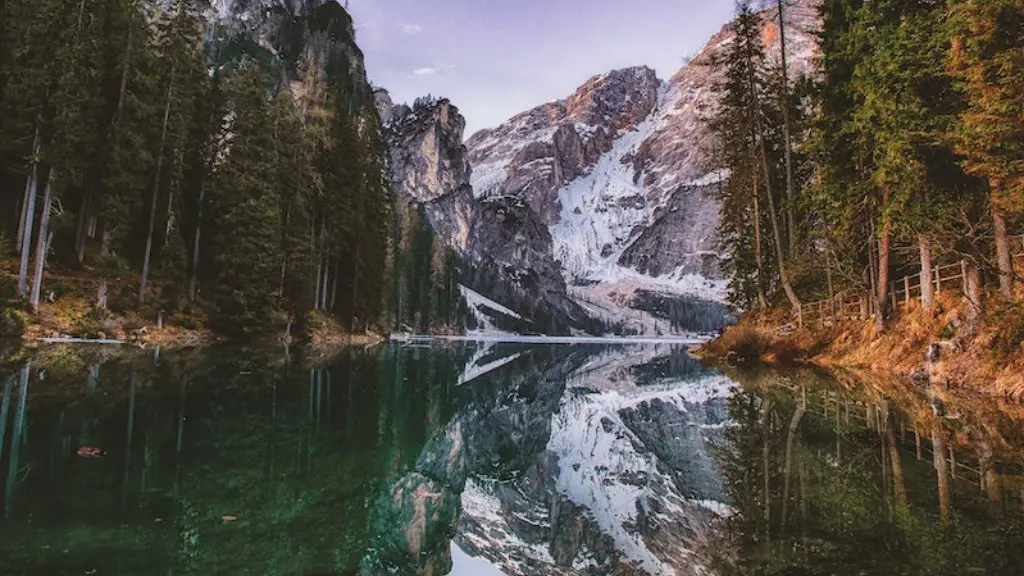Lake Victoria is the second largest lake in the world, spanning an area of over 68,800 square kilometers. Located in East Africa, this incredible body of water is the source of one of the longest and most powerful rivers in the world – the Nile. It is surrounded by the countries of Tanzania, Kenya and Uganda, and is an important source of fresh water for these nations.
One of the most important aspects of Lake Victoria’s climate is its relative humidity. It generally hovers around 90%, making the air damp and steamy. This is thanks in part to the warm temperatures, which typically remain in the mid-twenties (86F / 30C). Average temperatures throughout the year vary between 25-27C (77-81F). Because of its location in the tropics, the lake experiences two distinct rainy seasons – one from March to May and a longer season from October to December.
The lake can experience both high and low winds depending upon the season. The climate of Lake Victoria is heavily influenced by the El Niño-Southern Oscillation, or ENSO, a climate cycle which can cause the lake to be warmer or cooler than usual. These changes in climate can have huge impacts on the lake’s fish population, which is an important food source for the people living in surrounding countries.
In recent years, Lake Victoria has been hit by severe droughts. This has led to declining fish populations and dwindling water levels, as well as increased pollution – a direct result of industrial development in the area. Local governments are working hard to reduce the impact of these droughts by implementing water conservation measures, but the situation continues to be dire for many people.
The impact of climate change is also being felt in the region, as rising sea levels, extreme weather events and changing weather patterns are all contributing to the pressure on the lake’s ecosystem. The effects of climate change are particularly evident in the region’s weather patterns – days of frequent rain in certain areas followed by uncommonly dry periods in others. Additionally, large fluctuations in temperatures, as well as changes in air pressure and humidity are causing visitors to experience uncomfortable levels of heat and humidity.
Despite these challenges, Lake Victoria remains an important source of tourism in the area. Its stunning nature, stunning beaches and fascinating wildlife draw millions of visitors every year, many of whom flock to the region to view and explore the lake’s distinctive beauty. The lake is also an important source of food and income for local communities, supporting fishing and other aquatic activities.
The climate of Lake Victoria is an integral part of the region’s ecosystem, as well as its cultural and economic fabric. Climate change is undoubtedly having a negative impact on the lake, but with careful management and protection, the lake and its unique environment can be preserved for generations to come.
Economic Impact
The economy of East Africa is heavily dependent on Lake Victoria, with fishing representing the primary source of income for thousands of people. The lake and its surrounding area are home to a rich array of species, and these form the foundation for the region’s fishing industry. Fish caught in the lake are exported and sold in markets both within the region as well as internationally.
The temperate climate of Lake Victoria makes it ideal for raising a variety of crops, including maize and beans. Local farmers also use the lake’s water for irrigation, allowing them to cultivate the region’s important coffee and tea exports. In addition to this, the lake provides hydroelectric power, which has been used in the region since the 1950s.
With local governments taking steps to manage pollution and climate change, many of the industries that rely on the lake are on track to continue to grow and prosper. This will help to sustain the local economy, while protecting the environment.
Environmental Impact
The environmental impact of climate change on Lake Victoria is increasingly visible. The lake’s water levels have been steadily declining, and this is having a major effect on the surrounding environment. An increased number of drought conditions and warmer temperatures have made the lake more vulnerable to evaporation, leading to a decrease in the water levels.
This, in turn, has degraded the environment around the lake, with some areas becoming too dry for crops to survive. This can negatively affect the local economy, as farmers cannot grow crops and make a living. Additionally, the increased levels of pollution in the lake can have far-reaching health and ecological implications.
The fish population has been significantly reduced over the years, as fish are unable to find suitable habitats with the decreasing water levels. This can lead to overfishing, as local fishermen are unable to find enough food to sustain their livelihoods. Furthermore, the warming lake can create a favorable environment for the spread of disease, leading to outbreaks of illnesses such as cholera.
Climate change can have an impact on other important aspects of the lake’s ecosystem. As the water levels decrease, aquatic plants and animals suffer, resulting in the destruction of habitats and the loss of biodiversity. This can have lasting effects on the region’s wildlife, threatening their survival.
Social Impact
The intangible effects of climate change are often neglected, and this is certainly true of Lake Victoria. Local residents have had to cope with intense heat and humidity, as well as frequent drought periods, leading to a decrease in their quality of life. In some cases, people have had to resort to desperate measures, such as cutting down trees for firewood, in order to survive.
This has created social tensions, as people struggle to cope with the changing environment. Local economies, which depend on the lake’s resources, have been severely affected, leading to economic instability. This can have far-reaching consequences, leaving individuals and families vulnerable to poverty and exploitation.
However, the social impact of climate change is not all negative. Local communities are increasingly aware of the effects of global warming, and are coming together to find solutions. By taking part in initiatives such as tree planting and reforestation, individuals can make a positive contribution to the environment. Additionally, initiatives such as water conservation, sustainable fishing practices and improved agricultural techniques are helping to protect the lake and its resources.
Preservation Efforts
To protect Lake Victoria, many countries in the region have taken steps to increase awareness of climate change and its impacts. The region’s governments are working together to develop sustainable solutions that can reduce the lake’s vulnerability to droughts and water pollution. Additionally, local businesses are investing in renewable energy sources, such as solar and wind power, to reduce their dependence on hydroelectricity, thereby reducing the environmental impact.
Organizations such as the Lake Victoria Environmental Management Project (LVEMP) are working hard to protect the lake by raising awareness and promoting sustainable practices. Through initiatives such as tree planting and conservation, LVEMP is helping to promote the lake’s natural beauty, as well as its importance to the region’s social and economic fabric.
The future of Lake Victoria is uncertain, but one thing is clear – it is an invaluable and unique resource that must be protected from the ever-increasing effects of climate change. Through sustainable solutions and effective policy making, there is hope that the lake and its environment will remain alive and healthy for generations to come.
